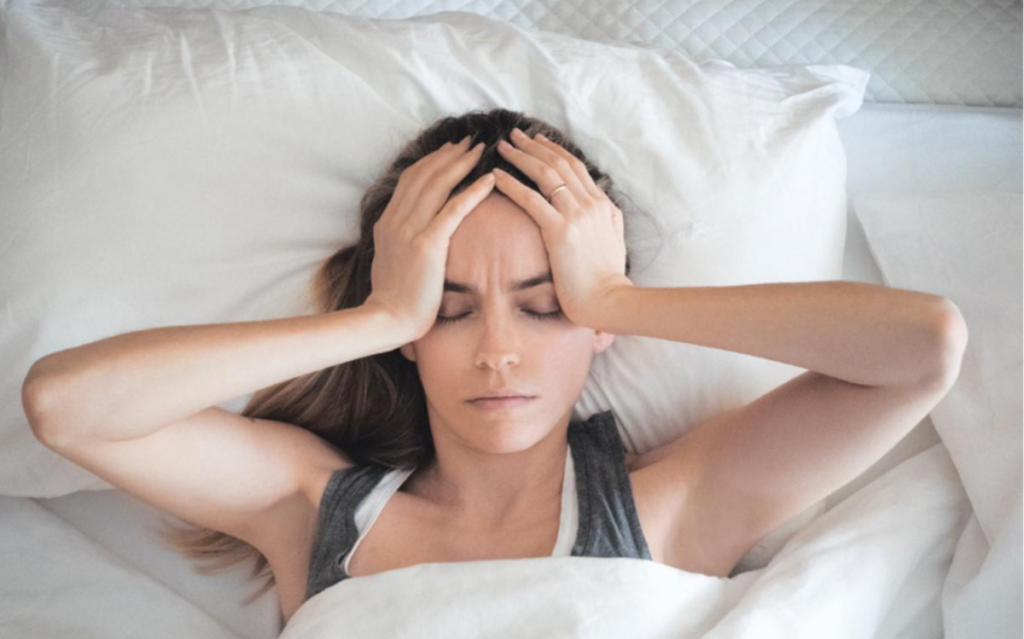Menstrual Migraines
By: Thomas deHoop, MD | Kalispell OB/GYN

Few women look forward to their period (menses) as it is both physically and mentally demanding. Bloating, mood changes, food cravings, cramping, nausea and back pain are just some of the symptoms women must endure every month with their periods.
Imagine in addition to one or more of the aforementioned symptoms anticipating a migraine headache. For many women, this is a reality and every period brings a migraine for those who suffer from Menstrual Migraines.
During the typical 28 day menstrual cycle, the female hormones estrogen and progesterone rise to sufficient levels to grow the lining of the uterus. This is done to prepare the uterus for a pregancy. At the end of 28 days, if a pregnancy doesn’t occur, the hormones decrease and the lining is shed. As the lining sheds, a class of chemicals, prostaglandins, are produced which cause some of the symptoms noted above. It is well established that the decline in the circulating hormone estrogen can trigger migraines.
Why does the decline in estrogen either naturally or medically cause headaches in some women?
Estrogen has several important actions in the central nervous system that may account for its association with migraines. Through complex interactions, estrogen deficiency can lead to dilation of blood vessels in the brain as well as sensitization of the nerves that send pain signals to the brain. Both of which can trigger or worsen symptoms of a migraine. Estrogen’s role in headaches is supported by studies showing that prior to puberty, boys have a higher frequency of migraines.
This prevalence changes after hormonal changes leading to puberty in young girls causes a rise and fluctuation in circulating estrogen. Migraines in women peak in the 40’s with as many as 40 percent of women experiencing a migraine by age 50. Predictably then, the prevalence of migraines declines sharply after menopause when estrogen levels decline to their lowest levels.
In addition to estrogens, prostaglandins are produced as the lining of the uterus sheds each month. Prostaglandins are inflammatory chemicals that play a very important role in the symptoms of migraines. Most anti-inflammatory medications inhibit prostaglandin production.
The strict diagnostic criteria of menstrual migraines are: 1) the migraine must have an onset within 2 days prior to or 3 days following the onset of menses and 2) occur in over two-thirds of menses. Pure menstrual migraines occur in women who have migraines only at the time of their menses, while menstrual-related migraines occur in women who may also have migraines at other times in their cycle.
Also unique to menstrual migraines, is that sufferers don’t have the typical visual changes (aura) that occurs with classic migraines. Compared with non-menstrual attacks, menstrual migraines tend to be more severe, last longer, and are less responsive to acute treatment.
Up to 70 percent of female migraine sufferers report a menstrual association. Pure menstrual migraines are less common than menstrual related migraine (7 to 21 percent versus 35 to 56 percent).
Treatment consists of three distinct strategies: acute treatment, short-term and long-term prevention.
Acute treatment is the same for a non-menstrual related migraine. The primary goal is to treat the acute symptoms of a current migraine. This is best reserved for women who suffer from infrequent menstrual migraines. Tryptans, a class of medications, are used to treat an acute event. They work to counteract the dilation of blood vessels and sensitization of nerves that led to the symptoms of a migraine.
In clinical trials, they have been shown to be statistically superior to placebo in their ability to resolve symptoms. In addition to medications, all migraine sufferers may find some relief from many other conservative measures such as massage, acupuncture, meditation, ice packs, magnesium, limiting salt intake, stress reduction or biofeedback.
For women with regular, predictable menstrual cycles experiencing menstrual migraines, short-term preventative therapy beginning a few days before menses can be the mainstay of therapy. Preemptive medication has been shown effective in reducing the frequency and severity of migraines. Frovatriptan, a type of tryptan, has been shown to be very effective in preventing menstrual migraines when initiated two days before menses and continued for a full six days.
After clinical trials showing efficacy, short-term prevention with frovatriptan has received an “A” rating for prevention from the American Headache Society and American Academy of Neurology for migraine prevention. Other tryptans have also shown varying efficacy in short-term prevention.
In addition to tryptans, or for woman unable to take tryptans, beginning a non-steroidal anti-inflammatory ( like ibuprofen/naproxen) has been shown to be beneficial in preventing migraines by decreasing the amount of prostaglandins.
Lastly, taking magnesium at day 15 of the menstrual cycle until menses begins is another method to possibly prevent or lessen the severity of menstrual migraine symptoms.
